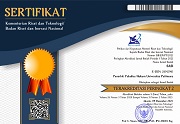Comparison of Kerta Desa Bali and Malaysian Indigenous Court
 ), Sonny Dewi Judiasih(2), Hazar Kusmayanti(3)
), Sonny Dewi Judiasih(2), Hazar Kusmayanti(3)
(1) Faculty of Law, Universitas Padjadjaran, Bandung, Indonesia
(2) Faculty of Law, Universitas Padjadjaran, Bandung, Indonesia
(3) Faculty of Law, Universitas Padjadjaran, Bandung, Indonesia
 Corresponding Author
Corresponding Author
Abstract
Introduction: Customary courts are institutions of dispute resolution that are alive and well in customary societies. Indonesia, which is not much different from Malaysia, has a similar culture and has customary courts. Kerta desa Bali is one of Indonesia's customary courts at the village level and in Malaysia there are indigenous court.
Purposes of the Research: This research paper will discuss the comparison of kerta desa Bali courts and Malaysian indigenous court.
Methods of the Research: This research uses a normative juridical approach. The research specification is descriptive analytical, namely by describing and comparing of kerta desa Bali and Malaysian indigenous court which are associated with regulations, legal theories, and community customs. The research stages use primary, secondary, and tertiary legal materials with data collection methods carried out through literature studies.
Results of the Research: Kerta desa Bali sought to resolve disputes through deliberation and peace, although customary courts were not included in the judicial system, but did not absolutely reject dispute resolution mechanisms through customary courts. Meanwhile, Malaysia emphasizes that there are three judicial systems, namely district courts, sharia courts, and indigenous courts in Sabah and Sarawak, which have structures and according to the customs of the indigenous population.Keywords
DOI
10.47268/sasi.v30i4.2322
Published
2024-12-31
How To Cite
@article{SASI2322,
author = {Karwiyah Karwiyah and Sonny Judiasih and Hazar Kusmayanti},
title = {Comparison of Kerta Desa Bali and Malaysian Indigenous Court},
journal = {SASI},
volume = {30},
number = {4},
year = {2024},
keywords = {Court; Indigenous; Indonesia; Kerta Desa; Malaysia.},
abstract = {Introduction: Customary courts are institutions of dispute resolution that are alive and well in customary societies. Indonesia, which is not much different from Malaysia, has a similar culture and has customary courts. Kerta desa Bali is one of Indonesia's customary courts at the village level and in Malaysia there are indigenous court.Purposes of the Research: This research paper will discuss the comparison of kerta desa Bali courts and Malaysian indigenous court.Methods of the Research: This research uses a normative juridical approach. The research specification is descriptive analytical, namely by describing and comparing of kerta desa Bali and Malaysian indigenous court which are associated with regulations, legal theories, and community customs. The research stages use primary, secondary, and tertiary legal materials with data collection methods carried out through literature studies.Results of the Research: Kerta desa Bali sought to resolve disputes through deliberation and peace, although customary courts were not included in the judicial system, but did not absolutely reject dispute resolution mechanisms through customary courts. Meanwhile, Malaysia emphasizes that there are three judicial systems, namely district courts, sharia courts, and indigenous courts in Sabah and Sarawak, which have structures and according to the customs of the indigenous population.},
issn = {2614-2961}, pages = {416--428} doi = {10.47268/sasi.v30i4.2322},
url = {https://fhukum.unpatti.ac.id/jurnal/sasi/article/view/2322}
}
Journal Article
Afresius Veren Kueng, Badruddin Nasir, dan Budiman, “Sinergitas Antara Pemerintah Desa Dan Tokoh Adat Dalam Mempertahankan Tanah Adat (Studi Kasus Desa Laham Kecamatan Laham Kabupaten Mahakam Ulu)”, Journal Pemerintahan Integratif, no. 3 (2019): 296-305, https://ejournal.pin.or.id/site/?p=1689.
Hanna Ambaras Khan, ed.al., “The Challenges In Enforcing Post Divorce Orders Of Native Courts In East Malaysia”, IIUM Law Journal, no. 1 (2021): 17:35, https://doi.org/10.31436/iiumlj.v29i(S1).633.
Hazar Kusmayanti, ed.al., “Legal Update Of Civil Procedures Through The Judges 'Rules: Review Of Judgments Of Traditional Heritage Court”, Journal of Positive Psychology & Wellbeing, no. 3, (2021): 1482–1493.
Hazar Kusmayanti, ed.al., “Strengthening Aceh's Customary Courts For Enforcement Of Civil Procedure Law In Indonesia”, Journal of Positive School Psychology, No. 6 (2022): 3405-3411.
I Dewa Ayu Dwi Mayasari and Dewa Gde Rudy, “Analisis Yuridis Tentang Proses Mediasi dalam Alternatif Penyelesaian Sengketa Tanah Adat di Bali”, Jurnal KERTHA WICAKSANA: Sarana Komunikasi Dosen dan Mahasiswa, no. 2, (2021), https://doi.org/10.22225/kw.15.2.2021.90-98.
I Made Wahyu Chandra Satriana dan Ni Made Liana Dewi, “Kerta Desa as a Customary Judicial Institution in the Settlement of Customary Conflicts Based on Bali Provincial Regulation Number: 4 of 2019”, Journal of Sustainable Develpment Science, no. 1 (2019): 1-7, http://ejournal.undwi.ac.id/index.php/jsds/article/download/790/722.
Jikat Binol Darimbang, Jacqueline Pugh-Kitingan, and Gaim James Lunkapis, “The Ritual Origins Of Native Law In Sabah And Future Implications: The Case Of The Kimaragang”, JATI-Journal of Southeast Asian Studies, no.1 (2023): 105-131, https://doi.org/10.22452/jati.vol28no1.5.
La Ode Dedihasriadi and Edy Nurcahyo, “Pancasila Sebagai Volkgeist: Pedoman Penegak Hukum dalam Mewujudkan Integritas Diri dan Keadilan”, Jurnal Magister Hukum Udayana, no. 1 (2020), http://ojs.unud.ac.id/index.php/jmhu.
Lala Anggina Salsabila, ed.al., “Studi Perbandingan Sistem Peradilan Indonesia Dan Malaysia”, Doktrin: Jurnal Dunia Ilmu Hukum dan Politik, no. 2 (2024): 01-12, https://doi.org/10.59581/Doktrin-widyakarya.v2i1.1950.
Mita Dwijayanti, “Eksistensi Pengadilan Negeri Dalam Penyelesaian Sengeketa Adat Di Bali”, Res Judicata, no. 2 (2019): 399-410, http://dx.doi.org/10.29406/rj.v2i2.1751.
Nurul Adawiya Binti Animbok, “Adat Sogit: Sebuah Amalan Kaum Kadazandusun”, Jurnal Borneo Akhailogia (Warisan, Arkeologi & Sejarah), no. 1 (2023): 91-104, https://jurcon.ums.edu.my/ojums/index.php/JBA/.
Putu Ulandari Sri Lestari1 and I Gusti Ayu Putri Kartika, “Harmonization of Levy System in Customary Village Referred to Mineral Mining Transporting Activity”, SASI, no. 3 (2023): 479 – 494, https://doi.org/10.47268/sasi.v29i3.1395.
Rafidah Malissa Binti Salleh, “Native Law as One of The Sources of Law in Sabah Legal System”, Malaysian Journal of Social Sciences and Humanities, no. 11 (2021): 399 – 412, https://doi.org/10.47405/mjssh.v6i11.1138.
Ratna Luhfitasari, “Upaya Hakim Dalam Menyelesaikan Perkara Perdata Yang Belum Di Atur Dalam Undang-Undang Nasional”, Jurnal de Iuse, no.2 (2019): 2655-4348, https://doi.org/10.36277/.v11i2.343.
Sigit Somadiyono, “Perbandingan Sistem Hukum Antara Indonesia dan Malaysia”, Wajah Hukum, no. 2 (2020): 414:440, http://dx.doi.org/10.33087/wjh.v4i2.243.
Zaka Firma Aditya, ed.al., “Romantisme Sistem Hukum Di Indonesia: Kajian Atas Konstribusi Hukum Adat Dan Hukum Islam Terhadap Pembangunan Hukum Di Indonesia”, Jurnal Recht Vinding, no. 1 (2019), http://dx.doi.org/10.33331/rechtsvinding.v8i1.305.
Book
Anita D.A. Kolopaking, Asas Itikad Baik Dalam Penyelesaian Sengketa Kontrak Melalui Arbitrase. Bandung: Alumni, 2016.
Bambang Daru Nugroho, Hukum Adat Hak Menguasai Negara atas Sumber Daya Alam Kehutanan & Perlindungan terhadap Masyarakat Hukum Adat. Bandung: Refika Aditama, 2019.
Barda Nawawi Arief, Hukum Pidana Adat. Jakarta: Kencana, 2023.
Dewi Wulansari, Hukum Adat Indonesia. Bandung: Refika Aditama, 2018.
I Nyoman Sirtha, Aspek Hukum Dalam Konflik Adat Di Bali. Denpasar: Udayana University Press, 2008.
I Wayan Surpha, Seputar Desa Pakraman Dan Adat Bali. Denpasar: Pustaka Bali Post, 2012.
Ishaq, Pengantar Hukum Indonesia. Depok: Rajawali Pers, 2019.
Made Sudjana, Kerta Desa Di Desa Pakraman Bali Masih Perlukah?. Denpasar: Udayana University Press, 2016.
Ronny Hanitijo Soemitro, Metodoligi Penelitian Hukum Dan Jurimetri. Jakarta: Ghalia Indonesia, 2019.
Sholih Mu’adi, Penyelesaian Sengketa Hak Atas Tanah Perkebunan dengan cara Litigasi Dan Non Litigsi. Jakarta: Prestasi Pustaka, 2010.
Soerjono Soekanto and Sri Mahmudji, Penelitian Hukum Normatif-Suatu Tinjauan Singkat, Jakarta: Rajawali Press, 2007.
Thesis, Online/World Wide Web and Others
Detik. Com, “Falsafah Tri Hita Karana: Pengertian dan Penerapannya dalam Kehidupan”, accessed July 6, 2024, https://www.detik.com/bali/budaya/d-6309757/falsafah-tri-hita-karana-pengertian-dan-penerapannya-dalam-kehidupan.
Focus, “Update on Indigenous Peoples of Malaysia”, accessed 12 September, 2024, https://www.hurights.or.jp/archives/focus/section3/2019/06/update-on-indigenous-peoples-of-malaysia.html.
Information by Mr. A.A Sayang Suparta, Kerta Desa Administrator in Sampalan Traditional Village, Dewan Sub-district, Klungkung Regency, Bali Province.
Official website of Native Court of Serawak, “About Native Courts of Sarawak”, accesed 19 September 2024, https://nativecourt.sarawak.gov.my/web/home/index/.
Website Universitas Islam Indonesia, “Eksistensi Hukum Adat Dalam Sistem Peradilan di Malaysia”, accessed Maret, 6 2023, https://www.uii.ac.id/eksistensi-hukum-adat-dalam-sistem-peradilan-di-malaysia/.| Dublin Core | PKP Metadata Items | Metadata for this Document | |
| 1. | Title | Title of document | Comparison of Kerta Desa Bali and Malaysian Indigenous Court |
| 2. | Creator | Author's name, affiliation, country | Karwiyah Karwiyah; Faculty of Law, Universitas Padjadjaran, Bandung; Indonesia |
| 2. | Creator | Author's name, affiliation, country | Sonny Dewi Judiasih; Faculty of Law, Universitas Padjadjaran, Bandung; Indonesia |
| 2. | Creator | Author's name, affiliation, country | Hazar Kusmayanti; Faculty of Law, Universitas Padjadjaran, Bandung; Indonesia |
| 3. | Subject | Discipline(s) | |
| 3. | Subject | Keyword(s) | Court; Indigenous; Indonesia; Kerta Desa; Malaysia. |
| 4. | Description | Abstract | Introduction: Customary courts are institutions of dispute resolution that are alive and well in customary societies. Indonesia, which is not much different from Malaysia, has a similar culture and has customary courts. Kerta desa Bali is one of Indonesia's customary courts at the village level and in Malaysia there are indigenous court.Purposes of the Research: This research paper will discuss the comparison of kerta desa Bali courts and Malaysian indigenous court.Methods of the Research: This research uses a normative juridical approach. The research specification is descriptive analytical, namely by describing and comparing of kerta desa Bali and Malaysian indigenous court which are associated with regulations, legal theories, and community customs. The research stages use primary, secondary, and tertiary legal materials with data collection methods carried out through literature studies.Results of the Research: Kerta desa Bali sought to resolve disputes through deliberation and peace, although customary courts were not included in the judicial system, but did not absolutely reject dispute resolution mechanisms through customary courts. Meanwhile, Malaysia emphasizes that there are three judicial systems, namely district courts, sharia courts, and indigenous courts in Sabah and Sarawak, which have structures and according to the customs of the indigenous population. |
| 5. | Publisher | Organizing agency, location | Faculty of Law, Universitas Pattimura |
| 6. | Contributor | Sponsor(s) | Universitas Padjadjaran |
| 7. | Date | (YYYY-MM-DD) | 2024-12-31 |
| 8. | Type | Status & genre | Peer-reviewed Article |
| 8. | Type | Type | |
| 9. | Format | File format | |
| 10. | Identifier | Uniform Resource Identifier | https://fhukum.unpatti.ac.id/jurnal/sasi/article/view/2322 |
| 10. | Identifier | Digital Object Identifier | 10.47268/sasi.v30i4.2322 |
| 11. | Source | Title; vol., no. (year) | SASI; Volume 30 Issue 4, December 2024 |
| 12. | Language | English=en | en |
| 13. | Relation | Supp. Files | |
| 14. | Coverage | Geo-spatial location, chronological period, research sample (gender, age, etc.) | |
| 15. | Rights | Copyright and permissions | Copyright: Authors who publish their manuscripts in this Journal agree to the following conditions: 1. The copyright in each article belongs to the author, as well as the right to patent. 2. Authors can enter into separate, additional contractual arrangements for the non-exclusive distribution of the journal's published version of the work (e.g., post it to an institutional repository or publish it in a book), with an acknowledgment of its initial publication in this journal. 3. Authors are permitted and encouraged to post their work online (e.g., in institutional repositories or on their website) before and during the submission process, as it can lead to productive exchanges, as well as earlier and greater citation of published work. 4. Authors have the right to self-archiving of the article (Author Self-Archiving Policy)
License: The SASI Journal is disseminated based on the Creative Commons Attribution-NonCommercial 4.0 International license terms. This license allows anyone to copy and redistribute this material in any form or format, compose, modify, and make derivatives of this material for any purpose. You cannot use this material for commercial purposes. You must specify an appropriate name, include a link to the license, and certify that any changes have been made. You can do this in a way that is appropriate but does not imply that the licensor supports you or your use.
|
Copyright (c) 2024 Karwiyah, Sonny Dewi Judiasih, Hazar Kusmayanti

This work is licensed under a Creative Commons Attribution-NonCommercial 4.0 International License.

 : 1862 times
: 1862 times Download : 791 times
Download : 791 times
















